Your cart is currently empty!
INTERVIEW | Mónika Katalin Pál
Mónika Katalin Pál is a passionate artist hailing from Hungary. Ever since she graduated, her love for painting has transformed from a mere pastime to an all-consuming fervor, ultimately shaping her career path.
Her artwork serves as a reflection of her emotions, seamlessly intertwining the realms of humankind, nature, and the spiritual world. With every stroke of her brush, she aims to capture the essence of the human experience and explore the profound connections we share with our surroundings.
At the core of her artistic journey lies the concept of ‘Spirit through hand.’ Spirituality serves as a major motivating element in her work, allowing her to delve into my innermost feelings and spiritual experiences. Through her art, she strives to create a visual language that transcends traditional boundaries and invites viewers to experience a profound sense of connection and introspection.
In addition to her artistic pursuits, animals hold a special place in her heart. They have become a significant source of inspiration and companionship throughout her life. She believes in the power of art to bring attention to the importance of preserving our natural world and its diverse inhabitants. In the future, she aspires to utilize her artistic talent to advocate for the protection of animals and the environment, using her work as a catalyst for change.
With a deep-rooted passion for art and a commitment to creating meaningful connections through her work, she is dedicated to pushing the boundaries of artistic expression and leaving a lasting impact on those who encounter her art.

My creations serve as a reflection of love, optimism, autonomy, and personal feelings, resonating with individuals on a deep and meaningful level. Motivated by the beauty of the natural world and the enchantment of animals, I draw inspiration from these sources to bring my paintings to life. My ultimate objective as an artist is to evoke joy and happiness in the hearts of those who view and purchase my work.
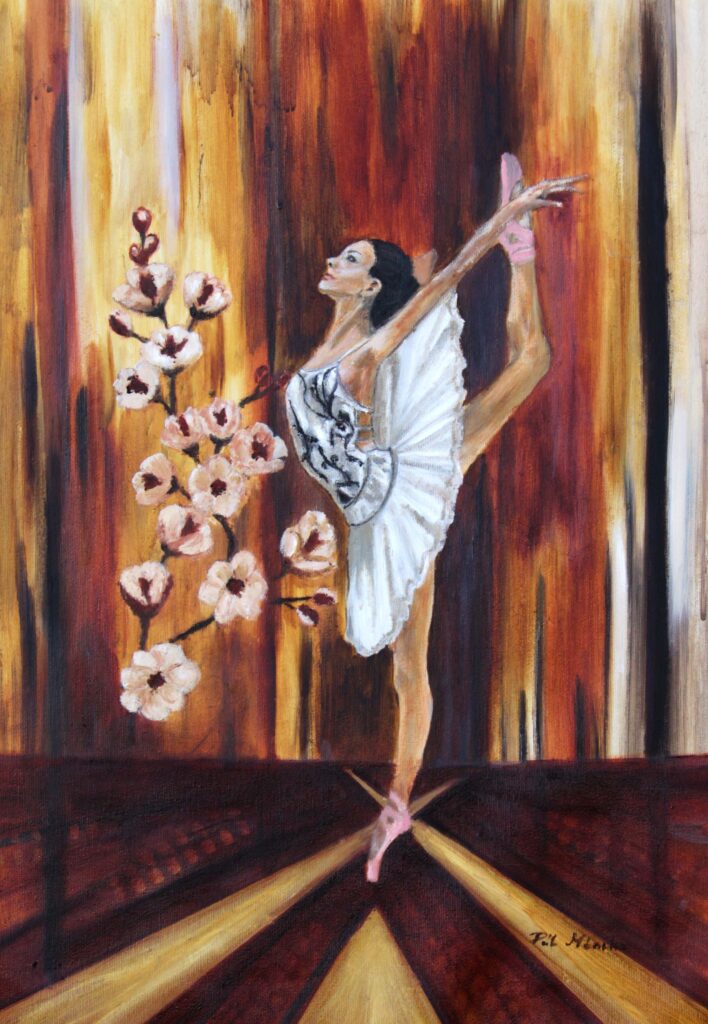
1.Can you share a bit about your artistic journey? How did your passion for painting evolve from a hobby into a career?
I’ve always been interested in art. Even as a child, I loved painting and drawing, but I think many children enjoy these activities, so it didn’t seem particularly special at the time. My true passion for art began to take shape during my studies at the University, where I majored in Humanities and delved deeply into Italian art and art history.
Finding my path in the art world took time. I can’t say that I was inspired by any specific artist; rather, the urge to paint came naturally to me. It was an intrinsic feeling that I had to pursue. Initially, I experimented on my own, but soon realized that I wanted to take my skills to a professional level. This led me to formal studies in painting.
One of the most memorable moments in my artistic journey was my first commission work. I felt so grateful and appreciated. Seeing the happiness on my clients’ faces when they received the painting was incredibly rewarding. It reinforced my belief that I was on the right path and highlighted the beauty of sharing a part of myself through my art.
Continuous improvement is crucial to me. I believe in constantly honing my skills and evolving as an artist. This dedication to growth has been a driving force in my journey from hobbyist to professional painter.
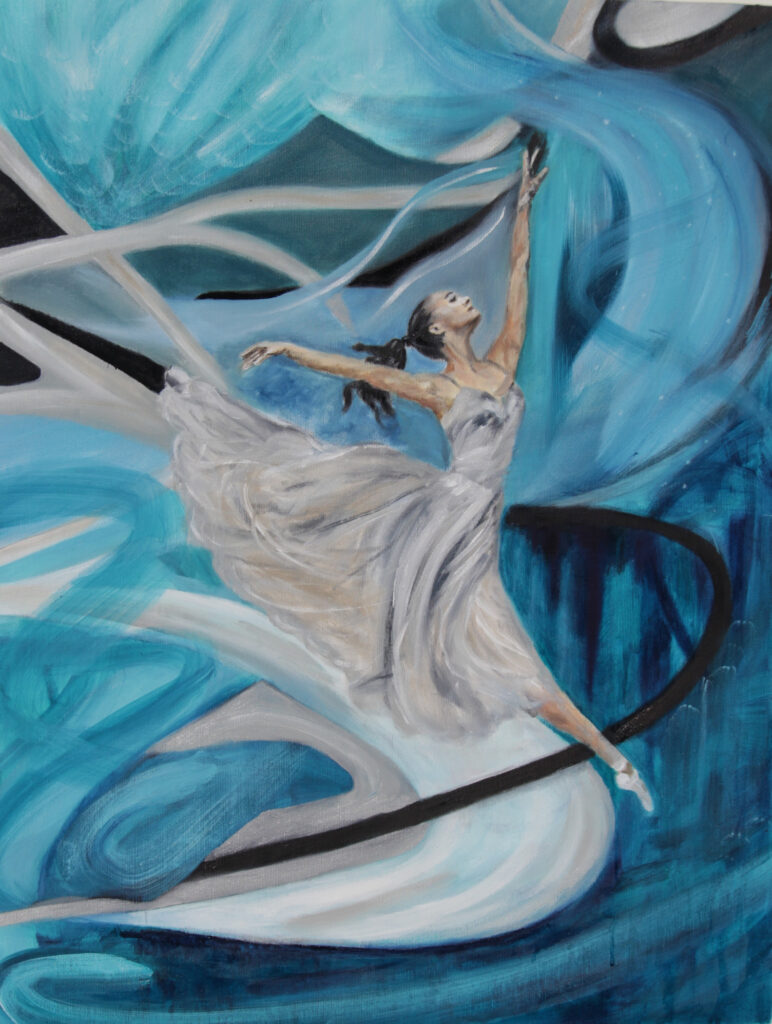
2. What does “Spirit through hand” mean to you, and how does itmanifest in your creative process?
“Spirit through hand” means that I channel my emotions and inner thoughts into my painting. I usually start with a clear idea and plan of what I want to create. However, there comes a point in the process where I let go of the plan and allow my intuition to take over. I observe my inner thoughts and feelings, letting my hand paint freely without any restrictions or predefined structure. This approach allows my true spirit to manifest through my art, creating pieces that are deeply personal and expressive.
By embracing this method, my artwork becomes a reflection of my inner world, capturing the spontaneity and authenticity of my emotions. It is important to me because it ensures that each piece is unique and resonates with both myself and the viewers on a deeper level.
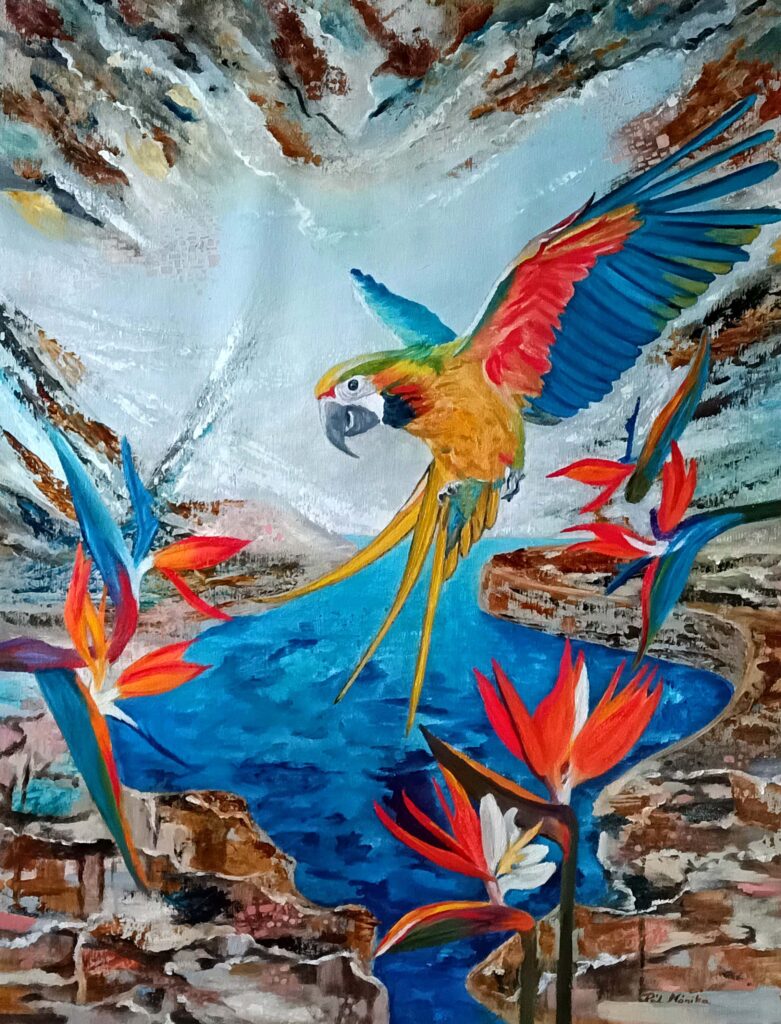
3.Your paintings deeply intertwine humankind, nature spirituality. How do you balance these elements in your artwork?
In my paintings, I strive to create a harmonious balance between humankind, nature, and spirituality. These elements are deeply intertwined and reflect my belief in their interconnectedness and their part in something unknown and greater. To achieve this balance, I start by considering the themes and emotions I want to convey.
Humankind represents the human experience, our emotions, and our interactions. Nature symbolizes the environment, its beauty, and its influence on our lives. Spirituality embodies the deeper, often intangible aspects of existence, such as our beliefs, values, and inner peace.
When I begin a piece, I think about how these elements can complement each other. I use color, composition, and symbolism to weave them together seamlessly. For example, I might depict a figure in a natural setting, surrounded by elements that evoke a sense of spirituality. As I paint, I allow my intuition to guide me, ensuring that each element is represented in a way that feels balanced and cohesive.
By emphasizing their connection and the sense of an unknown greatness, my artwork invites viewers to explore the profound relationships between humankind, nature, and spirituality. This approach allows me to create pieces that resonate on multiple levels, offering a glimpse into the deeper mysteries of existence.
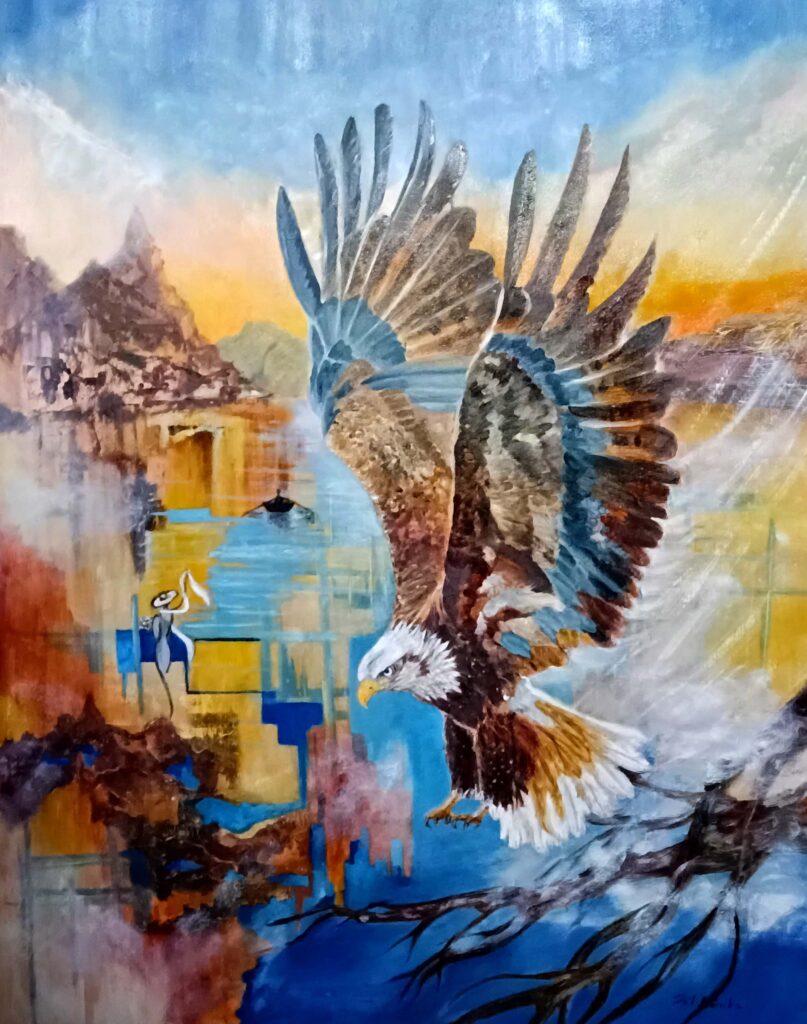
4.Can you walk us through your creative process? How do you translate your emotions and spiritual experiences onto the canvas?
My creative process is a blend of planning and intuition, allowing me to translate my emotions and spiritual experiences onto the canvas. It typically unfolds in several stages:
- Inspiration and Conceptualization: I begin by seeking inspiration from my surroundings, experiences, and inner thoughts. This could be a moment in nature, a personal experience, or a spiritual insight. I reflect on the emotions and themes I want to convey and start to form a concept in my mind.
- Sketching and Planning: Once I have a clear idea, I create preliminary sketches to outline the composition and key elements of the piece. This stage involves planning the layout, color scheme, and symbolism that will be used to express the intended message.
- Initial Layers: I start painting by laying down the initial layers of color and shapes. This is where the foundation of the artwork is built. I focus on capturing the basic forms and establishing the overall mood of the piece.
- Intuitive Painting: As the painting progresses, I shift from a structured approach to a more intuitive one. I let my emotions and spiritual experiences guide my hand, allowing the artwork to evolve organically. This stage is about being present in the moment and letting my inner feelings flow onto the canvas without restrictions.
- Refinement and Detailing: After the intuitive phase, I step back and assess the painting. I refine the details, enhance the colors, and make adjustments to ensure that the elements are balanced and cohesive. This stage is about bringing the initial vision to life while maintaining the spontaneity and authenticity of the intuitive process.
- Final Touches and Reflection: The final touches involve adding any last-minute details and ensuring that the painting resonates with the intended emotions and themes. I take time to reflect on the completed piece, considering how it aligns with my initial inspiration and how it might connect with viewers.
By combining structured planning with intuitive expression, I am able to translate my emotions and spiritual experiences onto the canvas, creating artwork that is both deeply personal and universally relatable.
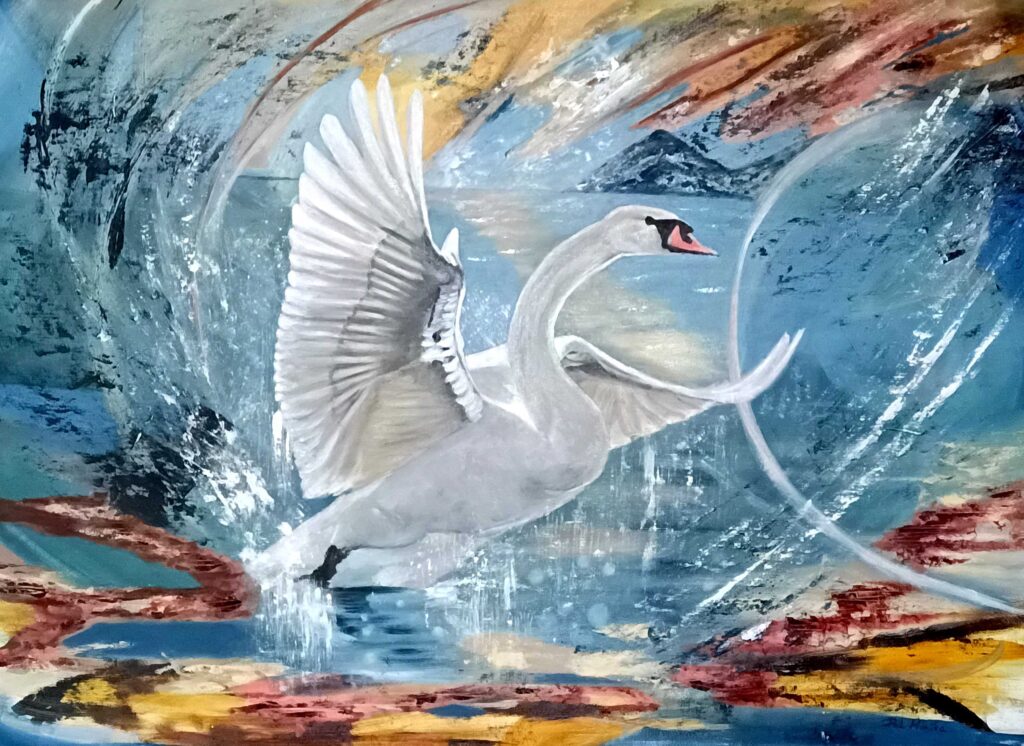
5,You mentioned that love, optimism, and autonomy are central themes in your work. How do these emotions take shape visually in your painting
Love, optimism, and autonomy are central themes in my work, and I strive to visually represent these emotions in various ways:
Love: To convey love, I focus on creating positive vibes through my paintings. I use warm, vibrant colors such as reds, pinks, and oranges to evoke feelings of warmth and affection. The subjects of my paintings, whether animals in movement, women, or couples dancing, are depicted in energetic and dynamic surroundings that radiate positivity and joy. The backgrounds or landscapes are always in an abstract style, adding extra dynamism to the painting, while the main elements remain realistic.
Optimism: Optimism is expressed through bright, uplifting colors like yellows, greens, and blues. These colors create a sense of hope and positivity. I use dynamic compositions with upward movement to suggest growth and progress. Elements such as sunlight, blooming flowers, and open skies often appear in my work to symbolize optimism and the promise of a better future. The abstract backgrounds enhance the sense of movement and energy.
Autonomy: Autonomy is represented through bold, confident strokes and strong, defined shapes. I use contrasting colors and sharp lines to convey a sense of independence and self-assurance. Subjects such as ships in turbulent surroundings or animals in motion reflect personal freedom and the power of self-expression. The abstract backgrounds provide a dynamic contrast to the realistic main elements, emphasizing their strength and individuality.
By thoughtfully integrating these visual elements, I aim to create artwork that resonates with viewers and communicates the powerful emotions of love, optimism, and autonomy.

6.Animals and the natural world play a significant role in your inspiration. Can you tell us about a particular animal or natural scene that has deeply impacted your work?
Animals and the natural world are a significant source of inspiration for my work. Horses and birds, in particular, have deeply impacted my art because they symbolize freedom to me. Horses, with their powerful and graceful movements, embody strength and liberation. Riding a horse brings me absolute happiness and a profound sense of freedom. When I ride in harmony with my horse, I feel as though we are one soul in different bodies, moving together as a single entity.
Birds, soaring through the sky, represent the boundless possibilities and the spirit of adventure. One natural scene that often appears in my paintings is the combination of water and high mountains in the background. Water, as a common element, signifies fluidity, life, and tranquility. It adds a dynamic and ever-changing aspect to my work. High mountains, far away in the background, evoke a sense of grandeur and the vastness of nature. They provide a majestic and timeless backdrop that contrasts beautifully with the more immediate and energetic elements in the foreground.
By integrating these animals and natural scenes, I aim to capture the essence of freedom and the profound connection between humankind and the natural world. These elements not only enhance the visual appeal of my paintings but also convey deeper meanings and emotions.
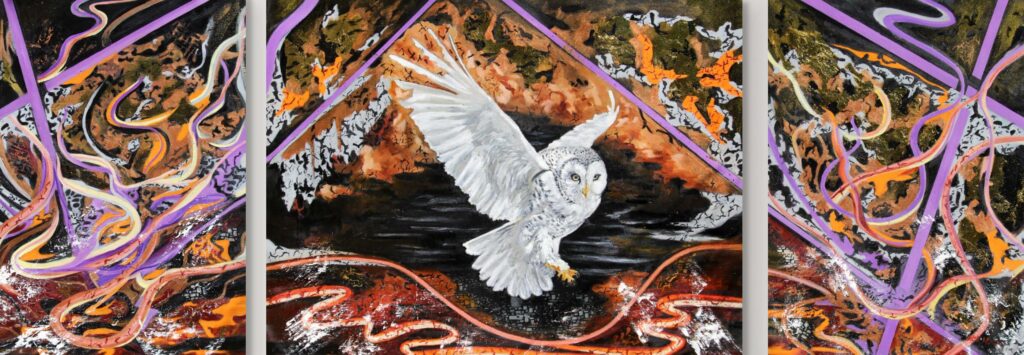
7.How does your spiritual connection guide your artistic choices? Do you have any rituals or practices that help channel this energy into your work?
We are all spiritual beings, but often we don’t fully embrace our spiritual power. My spiritual connection guides my artistic choices by helping me stay present and attuned to the moment. I don’t have any special rituals; instead, I focus on living in the moment and observing the vibe of the present. This mindfulness allows me to channel my energy and emotions into my work, creating art that is both authentic and deeply connected to my inner self.
By being fully present, I can tap into the spiritual essence of the moment, letting it influence my artistic decisions and the direction of my work. This approach ensures that my art remains true to my feelings and experiences, resulting in pieces that resonate with both myself and my viewers.
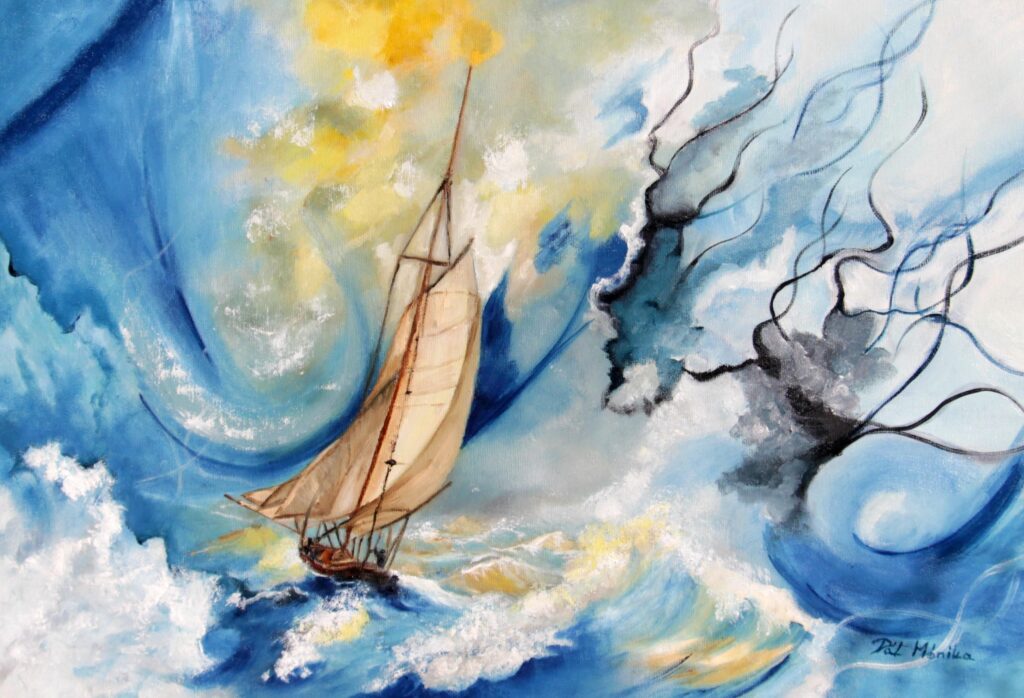
8 You aim to use your art as a catalyst for change, particularly in advocating for animals and the environment. How do you envision achieving this goal?
I aim to use my art as a catalyst for change, particularly in advocating for animals and the environment. In this busy world, I believe it’s crucial for people to take a moment to stop and observe the beauty and values around us. Through my paintings, I strive to highlight the magnificence of nature and the importance of preserving it.
By depicting animals and natural scenes with vivid colors and dynamic compositions, I hope to draw attention to the wonders of the natural world and inspire a sense of appreciation and responsibility. My goal is to encourage viewers to reflect on their relationship with nature and consider how their actions impact the environment and the creatures that inhabit it.
Art has the power to evoke emotions and provoke thought, and I envision my work as a means to foster a deeper connection between people and the natural world. By creating pieces that resonate with viewers, I hope to inspire positive change and advocate for the protection and preservation of our planet and its inhabitants.
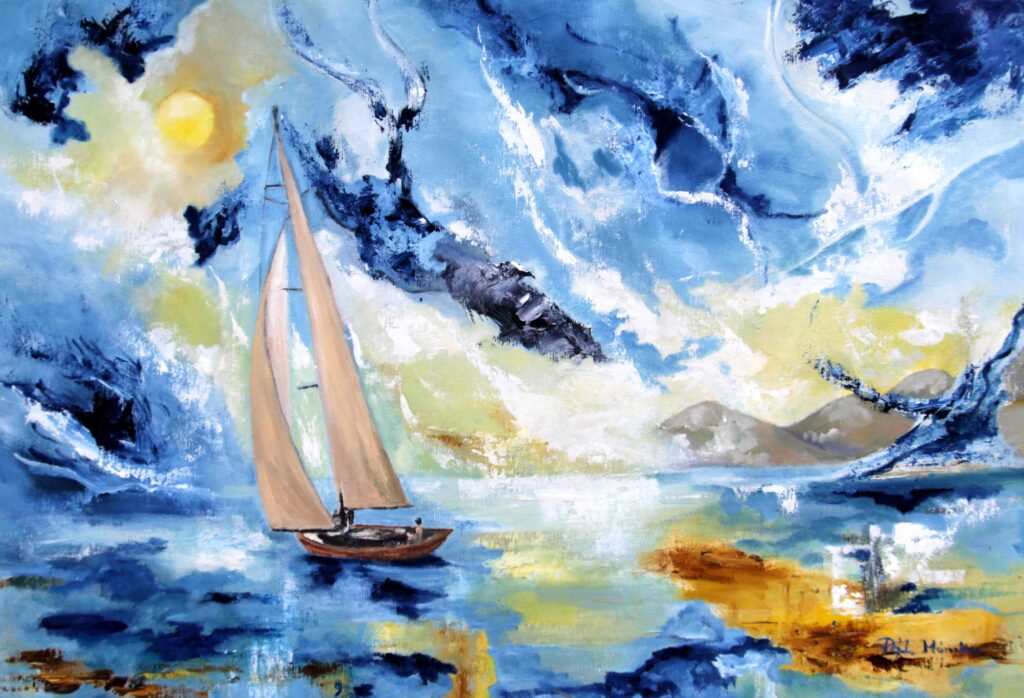
9.As you continue to evolve as an artist, what new themes or techniques are you interested in exploring?
As I continue to evolve as an artist, I remain open to exploring new techniques. However, at the moment, I have a strong preference for using oil paint. It gives me a special feeling and has its own natural resonance. I admire painters from the past, the Old Masters, and using oil paint provides me with a sense of connection to these geniuses in some way.
Oil paint allows me to achieve a richness and depth in my work that I find particularly satisfying. The texture, blending capabilities, and vibrant colors of oil paint enable me to express my artistic vision with great precision and emotion. While I am always curious about new methods and materials, the timeless quality of oil painting continues to captivate me and inspire my creative process.
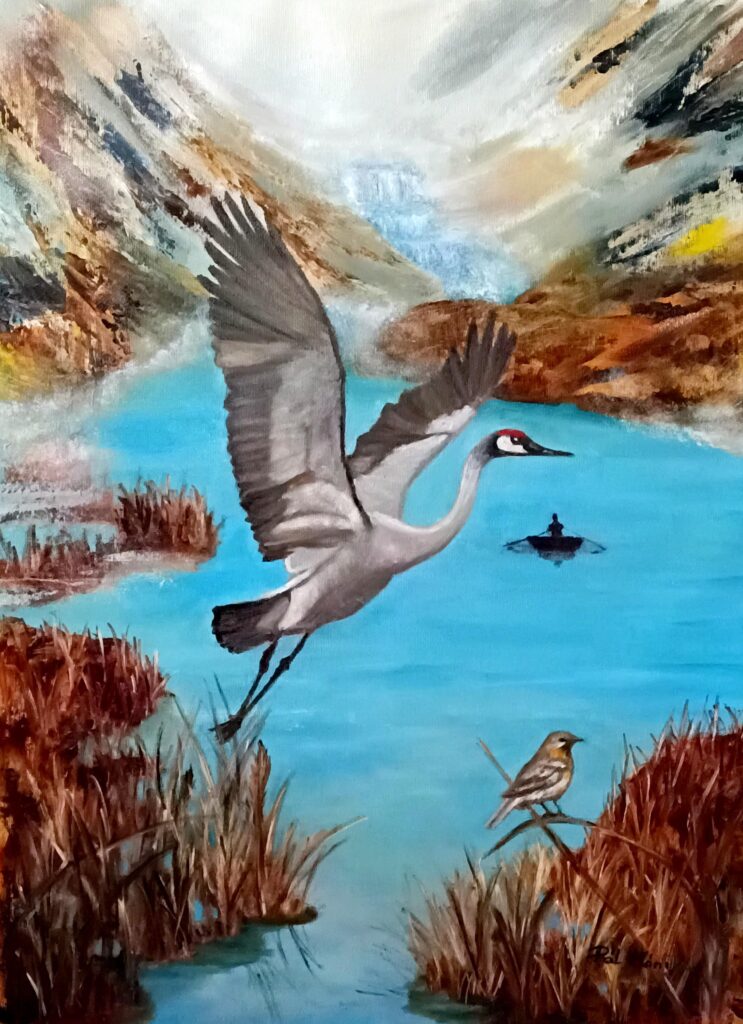
10. How do you feel about the relationship between the artist and the audience? Do you think art should be interpreted freely, or do you hope viewers see a specific meaning in your work?
I believe the relationship between the artist and the audience is a dynamic and personal one. While I paint based on my own impressions and thoughts, I think it’s best if viewers find their own story in my paintings. The message I intend might not be the same for every viewer, and that’s perfectly okay.
I’m happy when my paintings speak to the viewer and awaken their own story. Art should be interpreted freely, allowing each person to connect with it in their own unique way. This personal connection enriches the experience and makes the artwork more meaningful to each individual.
